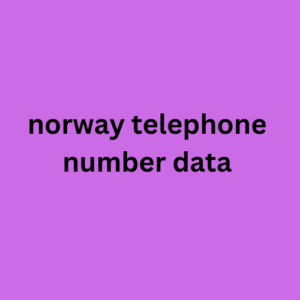Email marketing signup form example: Bloomingdale’s
Posted: Thu Dec 05, 2024 5:11 am
For better email marketing, double opt-in is the way to go.
3. Segment your mailing list
As your email list expands, it’s likely to contain diverse buyer profiles.
List segmentation is the process of dividing your list of subscribers into smaller sub-lists with common traits. The idea behind this technique is to engage subscribers with more relevant, targeted emails.
Typically, contact lists are segmented by demographic information like age and location, as well as customer information like lead score and purchase history. (This is where having a contact CRM database that works with your email marketing tool comes in handy as it stores information like this about your contacts.)
To get a head start on segmentation, add subscribers norway telephone number data to separate lists during signup by asking about their email content and frequency preferences.
A signup form for Bloomingdale's email list for email marketing.
This signup form by Bloomingdale’s asks customers to choose the kind of content they’d like to get in their inboxes. Every person who signs up for “home” will be added to the “home” email list in a CRM.
From there Bloomingdale’s can easily create specialized campaigns for contacts in this segment and send them relevant content.
The more you know about your customers, the more relevant and valuable the content will be that you send them.
4. Personalize your marketing emails
An example of email personalization.
People generally appreciate when brands add personal touches and pay attention to small details. When it comes to making us feel valued and understood as a customer, a little personalization goes a long way.
This rings true for email marketing, too.

Email personalization is essential to building relationships with prospects and customers.
Here are some simple email personalization ideas to help increase your open, click-through, and conversion rates.
Use subscribers’ first names in the email subject line and content.
Consider time zones when scheduling campaigns to maximize the chances of your email being read. Where are the bulk of your subscribers located?
Segment contacts so that messaging is targeted and relevant.
Use behavior-triggered emails based on how customers interact with your product/service.
3. Segment your mailing list
As your email list expands, it’s likely to contain diverse buyer profiles.
List segmentation is the process of dividing your list of subscribers into smaller sub-lists with common traits. The idea behind this technique is to engage subscribers with more relevant, targeted emails.
Typically, contact lists are segmented by demographic information like age and location, as well as customer information like lead score and purchase history. (This is where having a contact CRM database that works with your email marketing tool comes in handy as it stores information like this about your contacts.)
To get a head start on segmentation, add subscribers norway telephone number data to separate lists during signup by asking about their email content and frequency preferences.
A signup form for Bloomingdale's email list for email marketing.
This signup form by Bloomingdale’s asks customers to choose the kind of content they’d like to get in their inboxes. Every person who signs up for “home” will be added to the “home” email list in a CRM.
From there Bloomingdale’s can easily create specialized campaigns for contacts in this segment and send them relevant content.
The more you know about your customers, the more relevant and valuable the content will be that you send them.
4. Personalize your marketing emails
An example of email personalization.
People generally appreciate when brands add personal touches and pay attention to small details. When it comes to making us feel valued and understood as a customer, a little personalization goes a long way.
This rings true for email marketing, too.

Email personalization is essential to building relationships with prospects and customers.
Here are some simple email personalization ideas to help increase your open, click-through, and conversion rates.
Use subscribers’ first names in the email subject line and content.
Consider time zones when scheduling campaigns to maximize the chances of your email being read. Where are the bulk of your subscribers located?
Segment contacts so that messaging is targeted and relevant.
Use behavior-triggered emails based on how customers interact with your product/service.